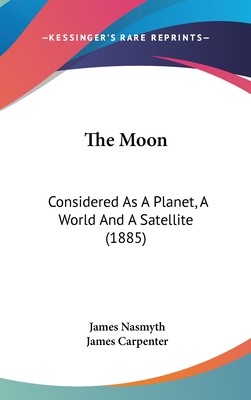
- We will send in 10–14 business days.
- Author: James Nasmyth
- Publisher: Kessinger Publishing
- ISBN-10: 0548982090
- ISBN-13: 9780548982099
- Format: 15.2 x 22.9 x 1.9 cm, kieti viršeliai
- Language: English
- SAVE -10% with code: EXTRA
Reviews
Description
The movement of the moon in space had been well documented by the second half of the nineteenth century. In this monograph, which first appeared in 1874, James Nasmyth (1808-90) and James Carpenter (1840-99) pay closer attention to the lunar surface, notably illustrating their work with photographs of accurate plaster models. At this time, many questions about the moon's properties were still open. Could the moon support life? Did it have an atmosphere? How had its craters been formed? Marshalling the latest available evidence, Nasmyth and Carpenter provide their answers in a text accompanied by explanatory diagrams. Also included are theories on planetary formation, a discussion of lunar volcanism, and a vivid imagining of a day on the moon's surface, describing everything from low lunar gravity to the sudden, monthly sunrise. The work remains an instructive resource, reflecting the state of contemporary astronomical knowledge.
EXTRA 10 % discount with code: EXTRA
The promotion ends in 23d.04:17:00
The discount code is valid when purchasing from 10 €. Discounts do not stack.
- Author: James Nasmyth
- Publisher: Kessinger Publishing
- ISBN-10: 0548982090
- ISBN-13: 9780548982099
- Format: 15.2 x 22.9 x 1.9 cm, kieti viršeliai
- Language: English English
The movement of the moon in space had been well documented by the second half of the nineteenth century. In this monograph, which first appeared in 1874, James Nasmyth (1808-90) and James Carpenter (1840-99) pay closer attention to the lunar surface, notably illustrating their work with photographs of accurate plaster models. At this time, many questions about the moon's properties were still open. Could the moon support life? Did it have an atmosphere? How had its craters been formed? Marshalling the latest available evidence, Nasmyth and Carpenter provide their answers in a text accompanied by explanatory diagrams. Also included are theories on planetary formation, a discussion of lunar volcanism, and a vivid imagining of a day on the moon's surface, describing everything from low lunar gravity to the sudden, monthly sunrise. The work remains an instructive resource, reflecting the state of contemporary astronomical knowledge.


Reviews